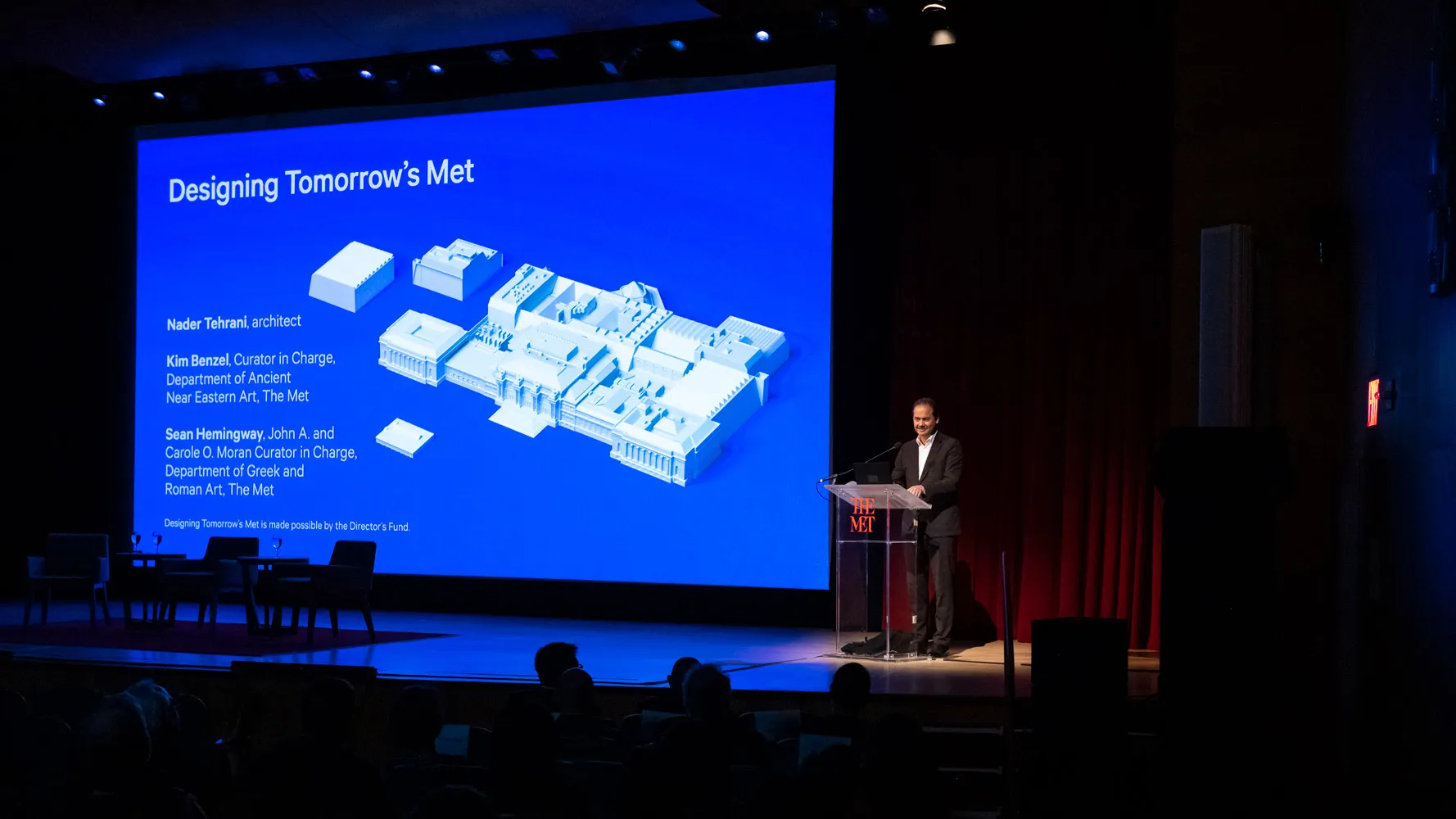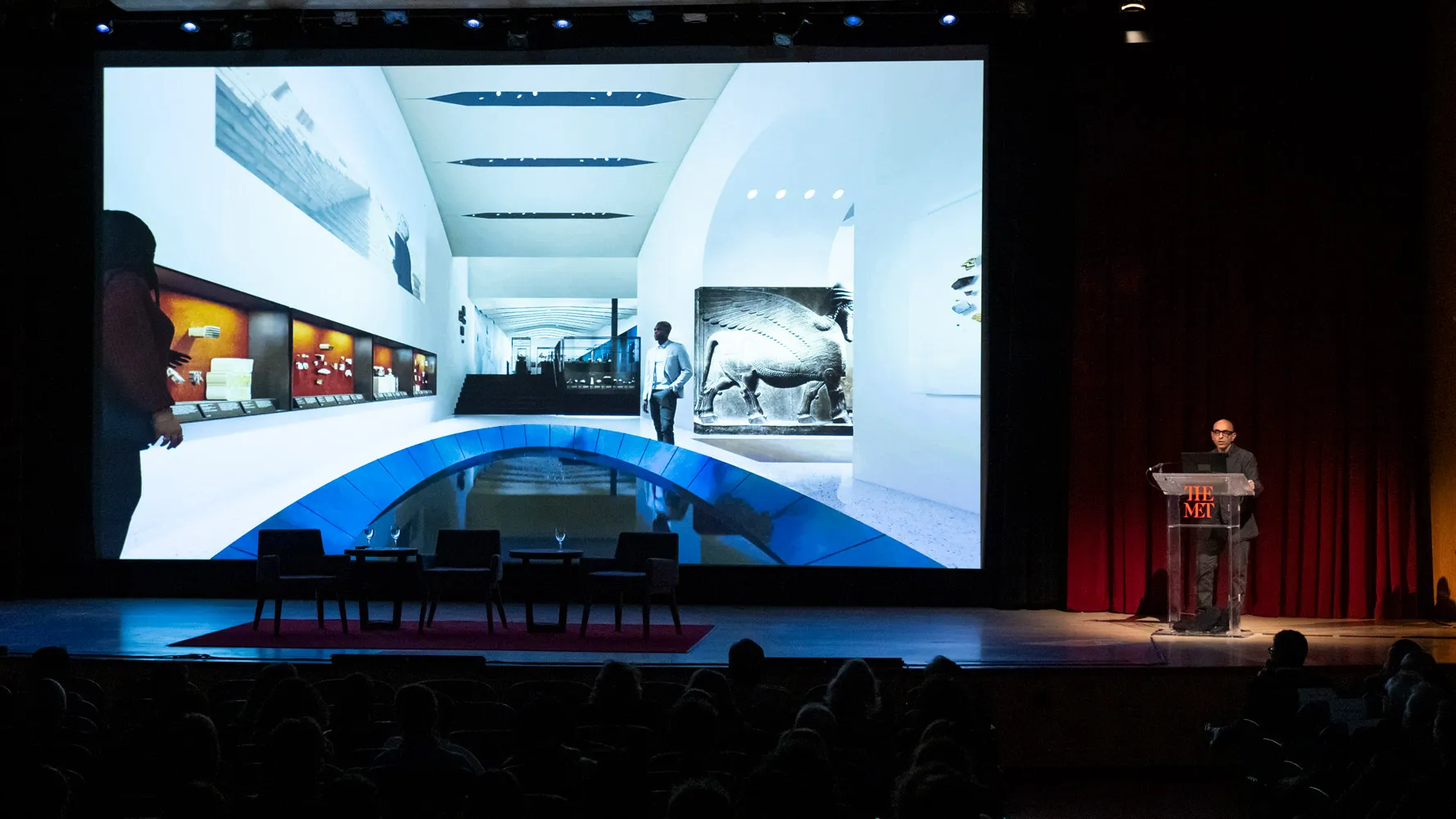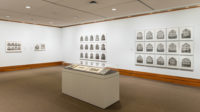Nader Tehrani Reveals Redesigned Galleries at The Metropolitan Museum of Art








Architects & Firms
On November 17, Nader Tehrani of the Boston-based firm NADAAA gave the second lecture in the series, “Designing Tomorrow’s Met.” The talk was a walkthrough of NADAAA’s plans for reimagining the Ancient Near East and Cypriot Art galleries of the Metropolitan Museum of Art in New York, as part of the museum’s extensive renovation plans that will also see the African Art, Ancient American Art, and Oceanic Art galleries in the Michael C. Rockefeller Wing redesigned by WHY Architects, and the Modern and Contemporary galleries renewed by Frida Escobedo.
Tehrani will take both a contextual, and materials-based approach to the redesign of the space, much of which Met director Max Hollein pointed out has not been touched since the 1980s. Using the vaulted ceiling of the Met’s Great Hall—above which the Ancient Near East and Cypriot Art Galleries sit on different levels—as a trigger, each of the respective floors will be topped by vaulted ceilings. Both emblematic and practical, the vaults are composed of ribbons, between which lighting, sprinklers, and mechanicals are packaged in a methodical reflective ceiling plan. Each floor is organized around the idea of a “field condition” that appears to be random, but is actually a calibrated series of provisional rooms, edges, and markers, formed around discrete collections, that help guide viewers through a reconstructed narrative of the ancients. Both galleries will be connected by a ramp that symbolically links the Ancient Near East and Cypriot galleries, which had previously been segregated, and provides ADA accessibility.
NADAAA makes what Tehrani calls “conceptual leaps between the ancient and contemporary,” presenting architectural elements and fixtures that reflect and reveal the materiality of the objects on display and their cultures: bronze casework embodying the Bronze Age for instance, a charred wood passage to house the scorched remains of Hasanlu in Iran, a red silk carpet reimagined in stone. Elsewhere there is copper, gold, and clay, not to mention bold colors like turquoise, sepia, and the intense blue of lapis lazuli. It’s one way of getting the viewer to enter into a deeper dialogue with the objects they’re viewing, by experiencing their original color and aesthetic, which will help them be seen as part of a greater culture, as opposed to simply works of art, which most were never intended to be in the first place. This focus offers an alternative to the white cube and its purported neutrality. “The denial of color has so often been a tool of colonialism, of cultural erasure,” Kim Benzel, curator in charge of Ancient Near Eastern Art, pointed out in a conversation with Tehrani and curator in charge of Greek and Roman Art, Sean Hemingway, after the lecture.
The transformational design walks a delicate line, as Tehrani admits, between framing the pieces—metallurgy, textiles, sarcophagi, statuary—in their correct capacity and giving the context its material specificity, without trying to upstage the work. As Benzel noted, once any of these archaeological objects are out of the ground, they are also out of context.
But the project is part of a bigger discussion that rescripts the narrative of ancient cultures. By attempting to evoke these various realities through character, affect, color, materiality, and immersive space, NADAAA’s intervention enters into the complex discussion of what role a museum plays in today's world.







